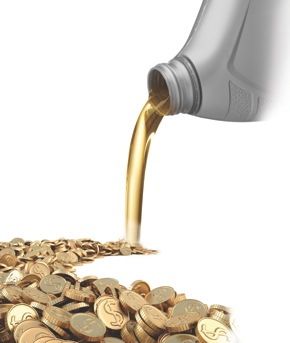
For many years, we’ve considered the under-valued lubrication, oil and filter change (LOF) as a loss-leader service designed to “up-sell” other services. To make matters even worse, some shop owners have further undermined the value of the LOF by using a time clock to measure lube bay efficiency. In so many of these cases, such marketing strategies have made the LOF such a loss leader that many shops consider it to be more of a nuisance rather than a profit center.
Let’s step back and take a look at the inspection and maintenance process recommended by the vehicle manufacturer. Some manufacturers recommend, for example, that bolt torque be checked on specific components, while others recommend that “wear” items, such as the mechanical park brake mechanism and cables, be checked for correct operation and adjustment. Many dealership import shops parlay that inspection and maintenance process into a much higher average repair order than do typical quick-service shops. Whatever those individual inspection items might be, we’re missing the point when we ignore the economics of inspecting, maintaining and lubricating modern import vehicles.
REDEFINING THE LOF
Today’s vehicle owners are often led by discount advertisements to believe that all the maintenance their vehicle needs is an “oil change” once or twice each year — at a loss-leader price, of course. In many cases, an inspection is done more with the intention of selling big-ticket items than with increasing the reliability and longevity of the vehicle. Any professional technician knows that those liabilities will nevertheless multiply as the miles add up.
It is also important to keep in mind that with the new, extended oil change intervals, most shops aren’t going to see their best customers more than once or twice per year. Therefore, let’s eliminate the term “oil change” from our service vocabulary and begin utilizing the term “recommended maintenance interval” instead.
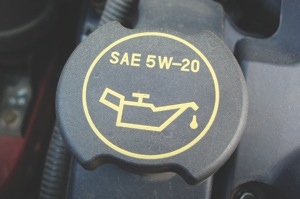 ENGINE OIL PROFITS
ENGINE OIL PROFITS
The lubricating properties of any engine oil depend upon the quality of its base oil and the specific properties of its additive package. Many direct fuel injection (DFI) engines serve as an example of the importance of using oil with quality lubricating properties because they’re equipped with high-pressure mechanical fuel pumps that tend to wear the pump eccentric on the engine’s camshaft.
The oil must not only have anti-wear properties to protect the camshaft, but also contain enough anti-oxidant properties to last through the extended oil change intervals we commonly see today. Suffice it to say that the higher the quality of the base oil, the more expensive the engine oil will be. In addition, the oil filter itself must have the flow rate and filtering capacity to meet those same standards. Thanks to these requirements, it’s more realistic to market an LOF service above the prevailing market price. See Photo 1.
CHASSIS PROFITS
An atypical but nevertheless still occurring situation has to do with vehicles, such as older 4WD Toyota trucks and SUVs, that require removing skid plates to access the steering linkage, drivetrain oil level check plugs and frame-mounted fuel filter. Just recently, I’ve encountered several of these types of vehicles that hadn’t been greased in years. In some instances, the steering linkage was so stiff that the steering wheel wouldn’t return after rounding a corner. In other cases, the steering linkage and ball joints were completely worn out. For that reason, performing a profitable lubrication service on some four-wheel- or all-wheel-drive vehicles requires an hour or more shop time, and rightly so.
DRIVETRAIN PROFITS
Most of the time, manual and automatic transmissions require very little fluid maintenance other than at the intervals mentioned in the owner’s maintenance manual. On the other hand, extended towing or high-temperature operation might cause a vehicle to fall into an optional “severe use” maintenance schedule that requires more frequent fluid or fluid and filter changes. And still for other vehicles, common sense should lead one to profitably replace transmission, transfer case and drive axle fluids when the vehicle has been exposed to deep water or extended off-road use. In fact, that is why many import manufacturers still install drain plugs in various drivetrain components. 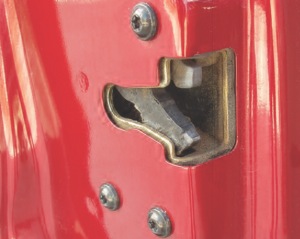
BODY LUBRICATION PROFITS
When the hood latch won’t release on a vehicle, I know that I’m dealing with a neglected vehicle. Most hood latches fail simply because they have become dry and rusty. Some latches have become so difficult to release that the hood release cable or release lever actually breaks. Fortunately, most sticky hood releases can be easily repaired by spraying them with an aerosol non-hardening grease or a Teflon-based aerosol lubricant.
Although groaning door hinges or sticking door locks can be equally irritating, the choice of lubricants is more critical because regular oils and greases can easily smear onto clothing. See Photo 2.
Since many modern door latches are made from plastic, I normally choose a dry-lube or aerosol silicone lubricant to loosen balky latches and quiet squeaking hinges. In addition, I typically choose a silicone spray to coat rubber door seals to not only help prevent squeaking noises, but also to help avoid the door from freezing shut in the winter. An aerosol silicone lube also helps relieve sticky window channels.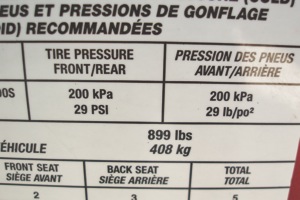
Mechanical door locks should be lubricated with a non-drying aerosol lubricant recommended specifically for that purpose. Last, but not least, an aerosol silicone lube works effectively on glove and console box latches. Keep in mind that performing these simple services causes the vehicle to feel like “brand-new” to your customer and gives him or her still another reason not to trade for new. See Photo 3.
FILTER PROFITS
Remember that most replaceable fuel filters happen to clog on busy interstate highways, where a replacement can be both expensive and very inconvenient. Although fuel filters have become an integral part of the fuel pump module on most vehicles, frame or body-mounted fuel filters still need to be replaced at 30,000-miles or at the OE-recommended intervals.
If a local fuel vendor is selling dirty or contaminated fuel, many fuel filters will clog well before their specified replacement interval. Therefore, experience should be an additional guideline on fuel filter replacements. Moreover, remember that most replaceable fuel filters are under-sold due to the reluctance of a shop to charge the additional labor required for the filter replacement.
In contrast, air filters are often inspected at each oil change. Unfortunately, excessive engine wear is more often caused by careless inspections and replacements, than by inspecting or replacing the air filter only at the manufacturer’s recommended intervals.
Remember also that, when an air filter becomes clogged, the only noticeable effect is a slight loss of power at higher engine speeds due to restricted air flow into the engine. During part-throttle operation, fuel economy isn’t affected because the engine’s air/fuel ratio calculations are based upon the airflow data provided by the mass air flow sensor.
In many cases, the air filter housing should be vacuumed to remove any loose dirt and debris that would prevent the filter from sealing against the air filter housing. It’s more appropriate to reduce excessive air filter inspections by using an adhesive label to record the mileage and date of service on the air filter housing.
While cabin filters are also a profitable add-on, let’s not forget the additional labor required for replacement on some applications. And, for an additional profit opportunity, start the engine and check the various heating, ventilation and air conditioning (HVAC) functions.
LIGHTING/BATTERY PROFITS
Although some vehicles employ warning systems for burned-out exterior light bulbs, it still pays to inspect exterior lighting. Similarly, bad wiper blades and empty washer reservoirs are usually forgotten until the next blinding rain storm. Buffing discolored or fogged headlamp lenses can also become another profit center, but only if it’s brought to the customer’s attention.
So it stands to reason that inspecting lighting/visibility issues can create a profit center that will substantially contribute to a shop’s bottom line and, perhaps, help prevent the vehicle owner from becoming involved in a serious accident.
Since most modern lead-acid batteries that are four years or older tend to fail without warning, it pays to test each battery as the vehicle passes through the lube bay. Modern battery conductance testers can not only analyze battery condition, but they can also test the starter and alternator in just a few extra minutes. The pay-off, of course, is not only in extra service income, but also in the extra security provided to your customer with a properly serviced or freshly replaced battery. 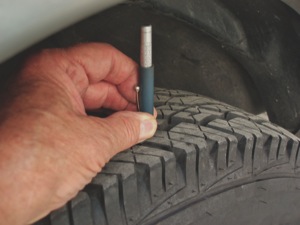
TOOLING PROFITS
Thanks to extended oil change intervals, import manufacturers have also introduced oil service, service mileage or service interval warning lights. In some applications, a scan tool or universal oil light reset tool must be used to reset the oil life monitoring system in the PCM. In other applications, a scan tool must be used to measure transmission and drivetrain fluid levels. The tire pressure monitoring system (TPMS) on many vehicles must also be re-learned or reset if the tires have been rotated. See Photo 4. Whatever the situation, it’s important to include the cost, maintenance and depreciation of reset tooling in the price of a scheduled vehicle maintenance and inspection.













